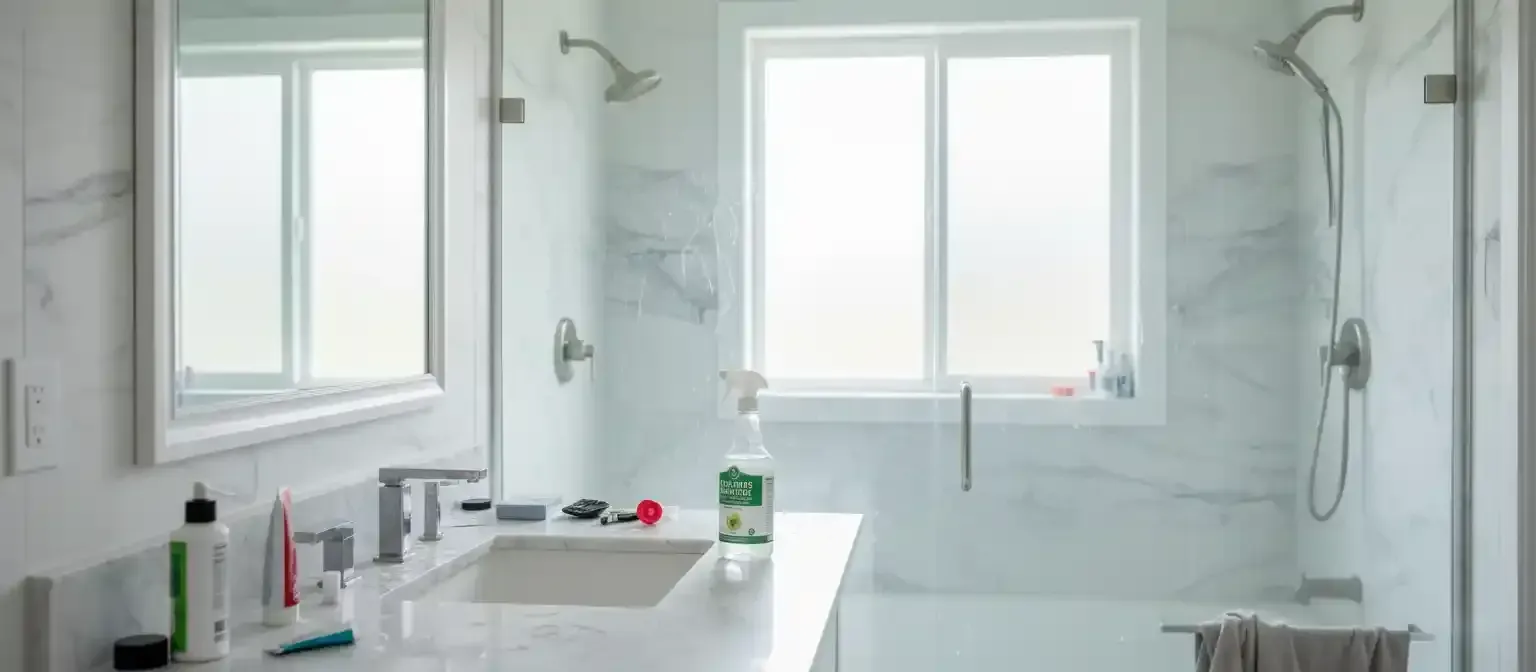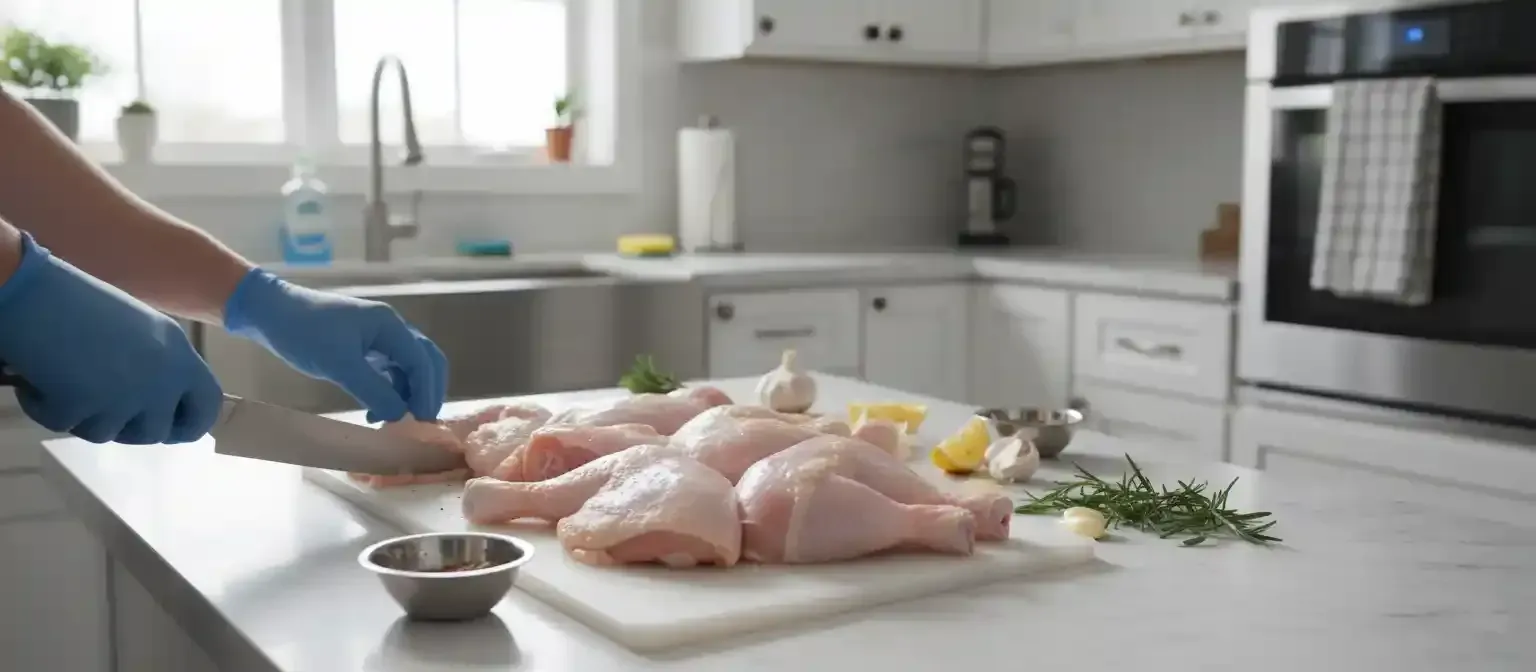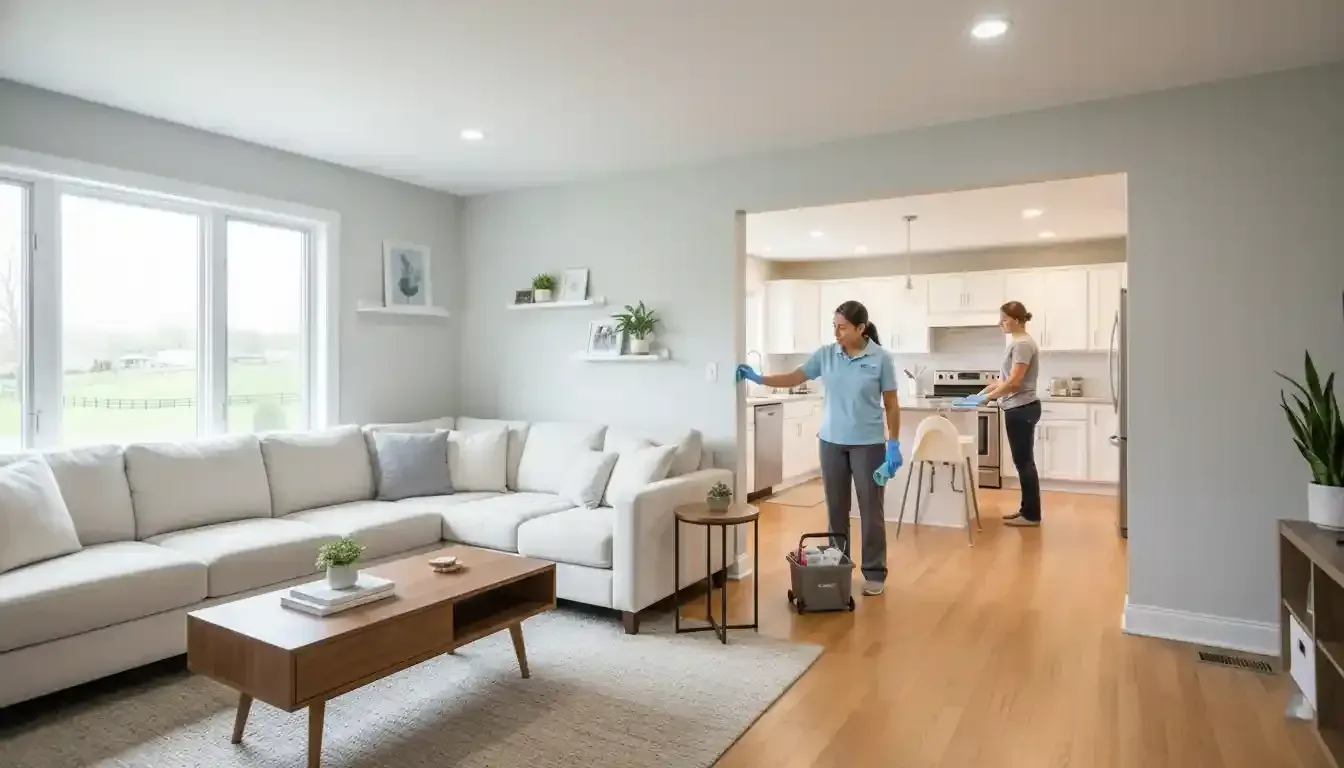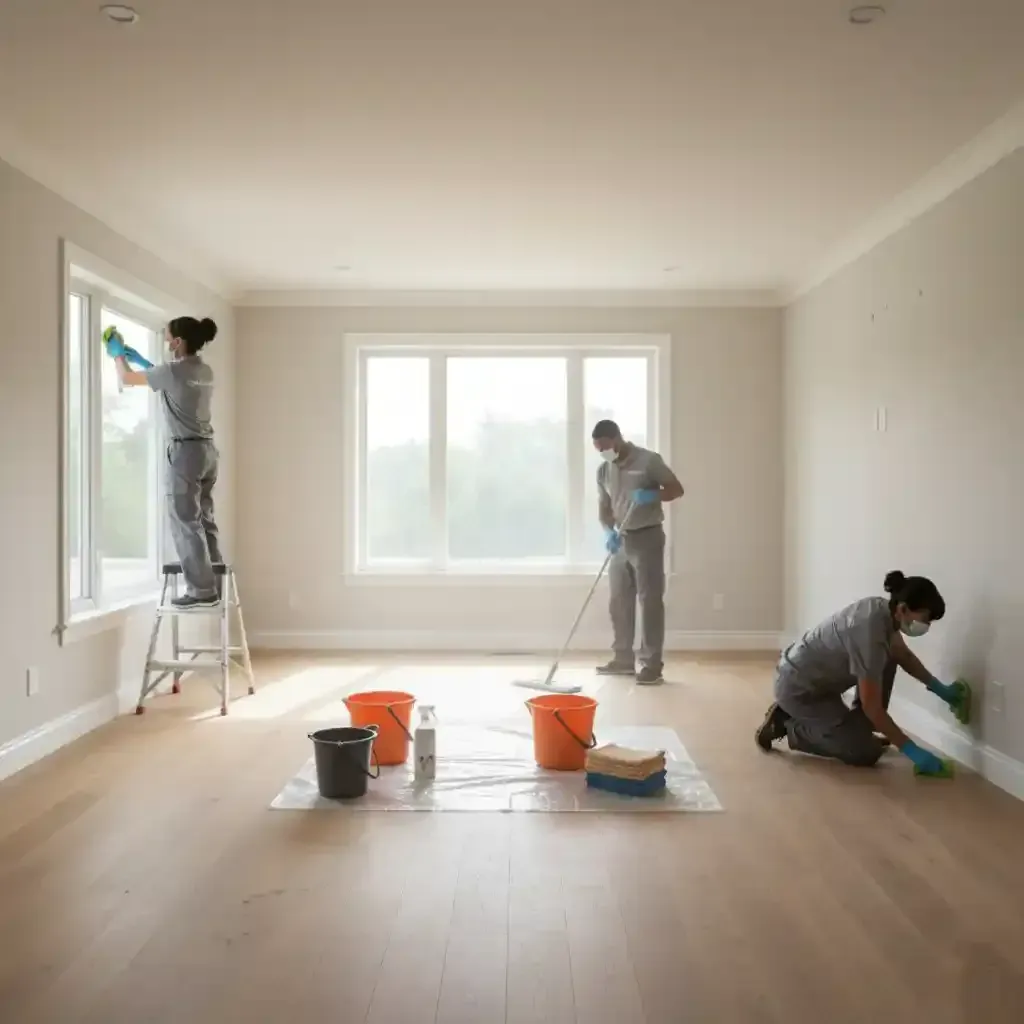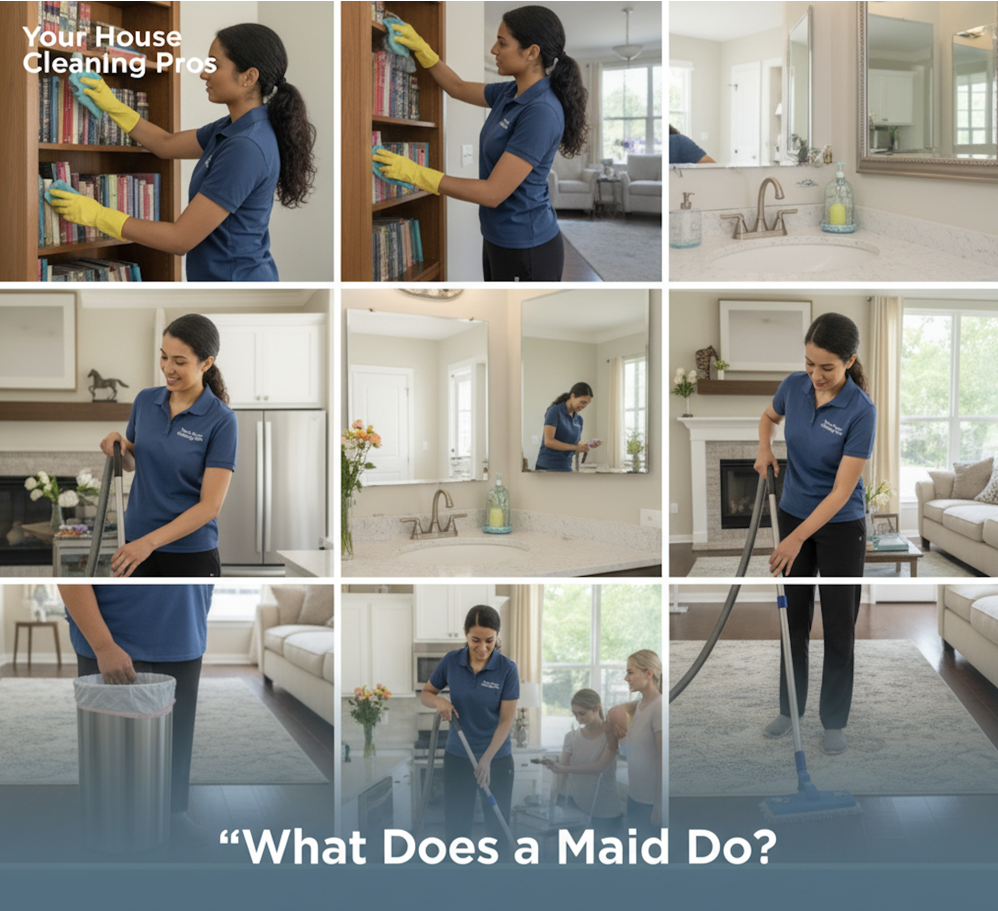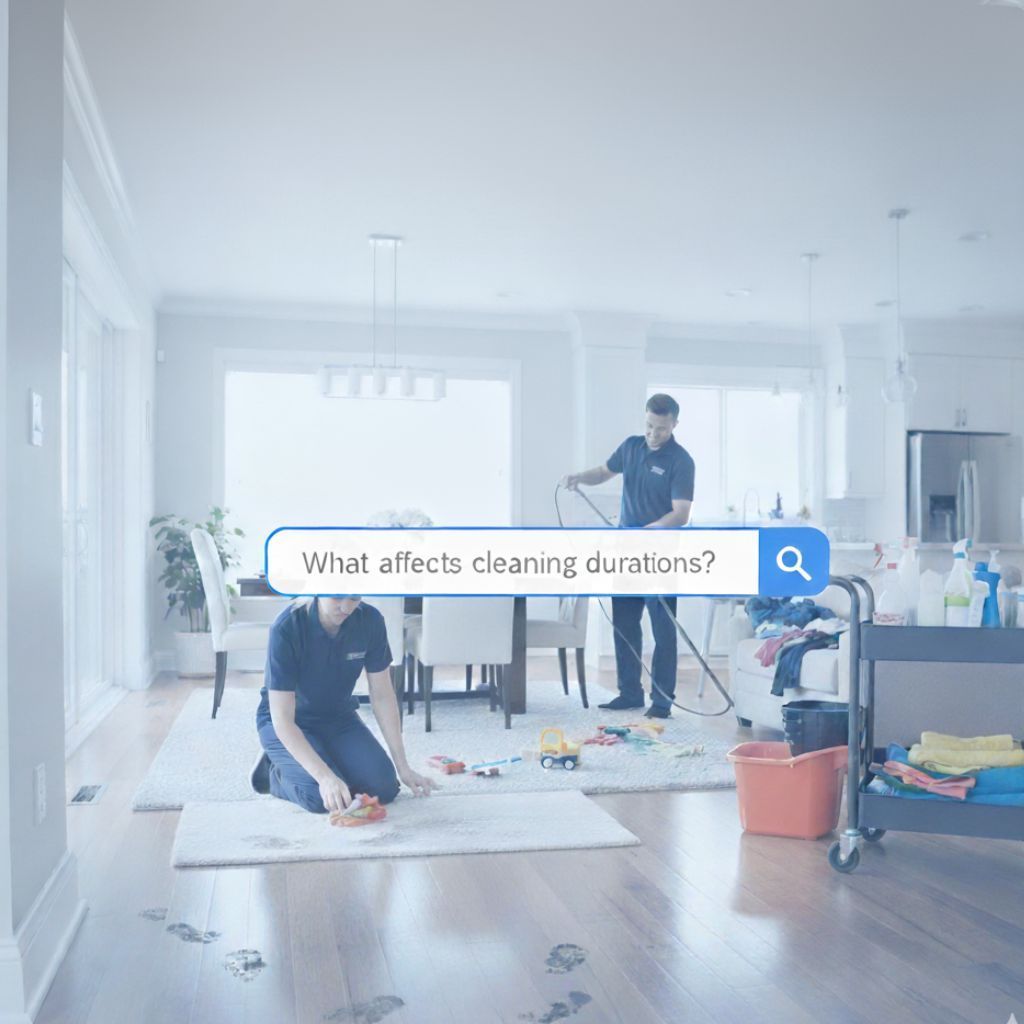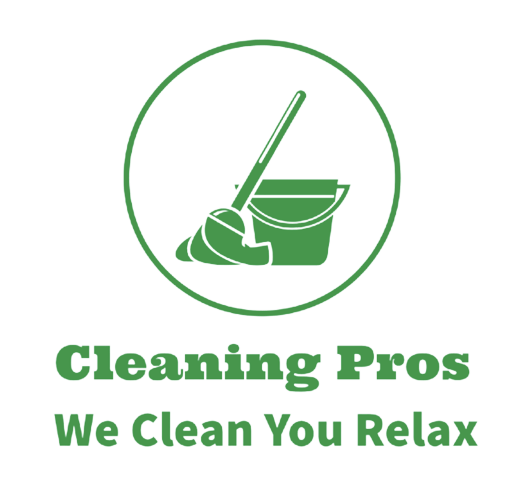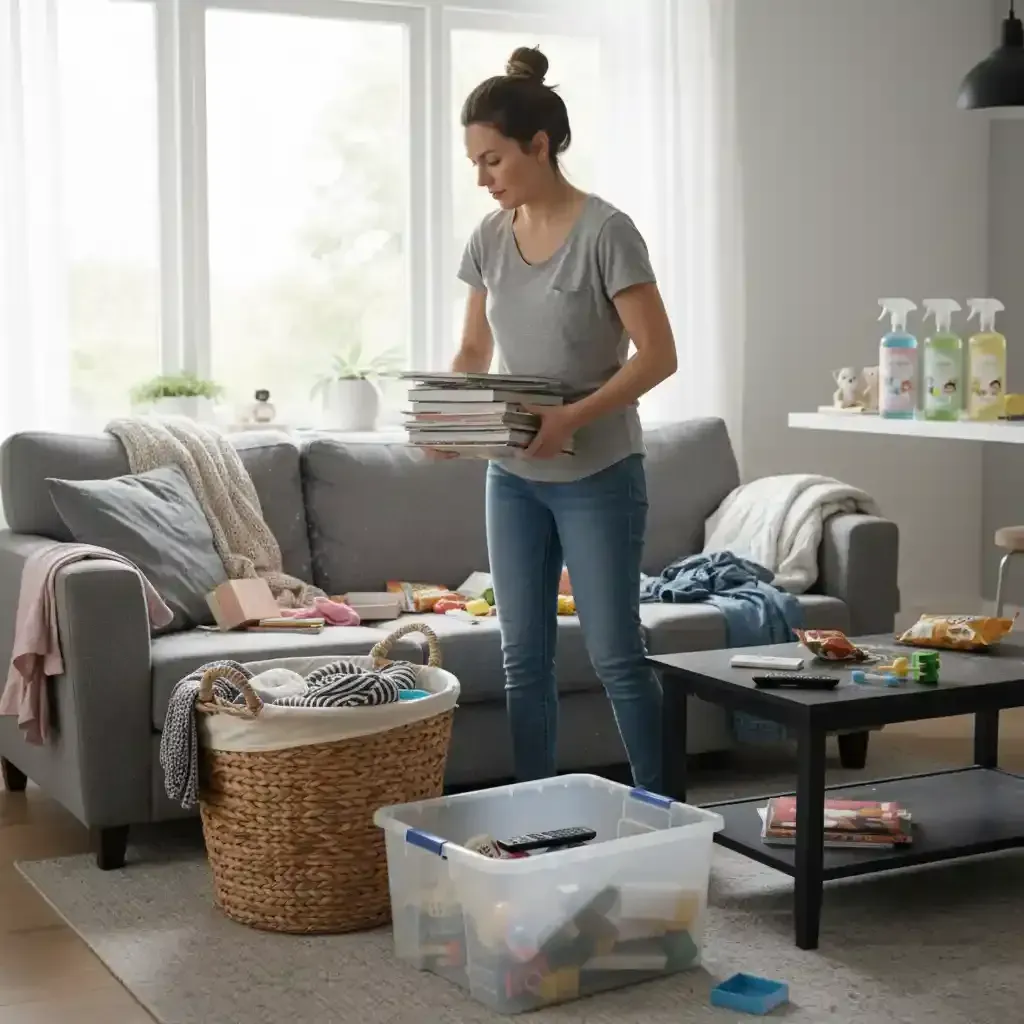The real reason a clean home boosts your mental health (it's not what you think)
Hiring a professional cleaning service offers a powerful benefit to your mental well-being that goes far beyond a sparkling countertop. The most significant impact isn't the clean home itself, but the permanent disruption of the "chore cycle"—the exhausting loop of stress, decision fatigue, and relational friction that comes with maintaining a household.
Defining the unseen enemy: The 'chore cycle'
When we think about cleaning house, we often focus on the physical labor: the scrubbing, vacuuming, and dusting. But the real weight of maintaining a home is mental, not muscular. This is the "chore cycle," a relentless cognitive burden that operates 24/7. It's not just one task; it's a four-part loop that quietly drains your energy and peace of mind.
The cycle includes:
- The Mental To-Do List: You walk into a room and your brain immediately starts cataloging imperfections. You see the dust on the baseboards, the smudges on the window, and the pile of mail on the counter. This creates a constant, low-grade hum of unfinished tasks in your mind.
- The Planning and Negotiation: Who is going to clean the bathrooms this weekend? When will we have time to deep clean the kitchen? For couples and families, this stage often introduces friction and resentment, turning home into a place of management instead of relaxation (sound familiar??).
- The Physical Execution: This is the part we typically dread, carving out precious time from our weekends or evenings to do the actual work.
- The Lingering Guilt: Perhaps the most damaging part of the cycle is the feeling of guilt when life gets in the way and the cleaning doesn't get done. The messy house becomes a physical representation of your perceived failure to "keep up," fueling feelings of overwhelm.
Outsourcing chores for mental well-being isn't about laziness; it's about strategically eliminating this entire draining cycle from your life.
The stress-mess feedback loop: How your environment shapes your mind
Your home should be a sanctuary, a place where you can recharge. But when it's in a constant state of disarray, it can become a source of chronic stress. This creates a negative feedback loop: stress makes it harder to find the motivation to clean, and the mess itself increases your stress levels. An unfinished cleaning to-do list can create a 'vicious cycle'; the visible mess reflects a feeling of being overwhelmed, which in turn makes a person feel even more overwhelmed according to an analysis by Good Housekeeping.
This isn't just a feeling; it's rooted in how our brains process information. Researchers have found that being surrounded by clutter makes people more distractible and less able to focus as it overloads our senses with competing stimuli. This "visual noise" makes it difficult for our brains to relax, contributing to anxiety and a lack of mental clarity. The residential cleaning and psychological well-being of a person are directly linked, as our physical environment plays a critical role in our mental state. A study from Princeton University confirmed that our physical environment can positively or negatively impact our ability to complete tasks and our overall mental health by affecting our cognitive load.
A professional cleaning service acts as a powerful "reset button" for both your home and your mind. By ensuring your environment is consistently clean and organized, it breaks the stress-mess loop. This consistent state of order helps reduce cortisol levels, the body's primary stress hormone, creating a more mindful living space that promotes calm and focus.
DIY cleaning vs. professional service: A deeper look
Many people wonder, "Is a cleaning service worth it for my sanity if I can just do it myself?" To answer that, we have to compare what each option truly provides.
The tangible outcome: A clean home
On the surface, both DIY cleaning and hiring a professional service can lead to the same result: a clean house. With the right tools and enough time, you can certainly achieve a sparkling home on your own. This is the obvious, tangible benefit that both paths offer. You get a space that looks and feels fresh, which on its own can temporarily boost your mood.
The intangible burden: The 'chore cycle'
Here is where the two options diverge dramatically. DIY cleaning doesn't eliminate the chore cycle; it is the chore cycle. You are still responsible for the mental to-do list, the planning, and the execution. While you might feel a sense of accomplishment afterward, you haven't freed up any mental space. The cycle will simply reset and begin again next week. Professional cleaning, on the other hand, is the only way to completely outsource and eliminate that entire cognitive load. The joy of coming home to a clean house is magnified because you invested zero mental or emotional energy to get it there.
The surprising ROI of a professionally clean home
Framing professional cleaning as a luxury expense misses the point entirely. It’s more accurately viewed as a strategic investment in your well-being, with returns measured in reclaimed time, relational harmony, and mental clarity.
From domestic conflict to quality time
For couples and families, disagreements over household chores are a top source of conflict. Hiring a cleaner to reduce domestic arguments is a powerful strategy for improving relationship health. When a neutral, professional third party handles the cleaning, it removes a major point of contention from the table. The time and energy once spent negotiating and arguing over chores can be reinvested into quality time, strengthening family bonds and creating a more peaceful home environment.
Reclaiming your most valuable asset: time
The modern professional or parent is chronically time-poor. A recurring maid service can give you back anywhere from 3 to 8 hours per week. That’s time you can reallocate to what truly matters: being present with your children, pursuing a hobby, exercising, or simply resting. This reclaimed time is a direct antidote to the decision fatigue and burnout that plague so many people.
An investment in your well-being
Consider the cost of a bi-weekly cleaning service in the context of other wellness practices. We readily invest in gym memberships, therapy sessions, or yoga classes to manage our physical and mental health. Professional cleaning as a form of self-care fits squarely into this category. It's a proactive measure to reduce stress, improve focus, and create a restorative home environment that supports your mental wellness goals. For those with conditions like ADHD, a consistently organized space can be transformative, and for anyone struggling with seasonal depression, a bright, clean home can provide a significant mood lift.

Key factors to consider before you hire help
When you decide to invest in your well-being through a cleaning service, it's important to choose wisely. Here are the core factors to evaluate.
Cost vs. Value of Reclaimed Time
It's easy to get stuck on the dollar amount, but the real calculation is one of value. Calculate how many hours you spend cleaning each month and what that time is worth to you. If outsourcing frees you up to work an extra billable hour, spend more quality time with your family, or simply get the rest you desperately need, the service often pays for itself in non-monetary—and sometimes monetary—ways.
Trust, Safety, and Professionalism
You are inviting someone into your home, your most personal space. Trust is non-negotiable. Look for a professional service that is bonded and insured. Ask about their hiring and training process. Do they perform background checks on their employees? A reputable company will be transparent about these procedures to provide you with peace of mind.
Desire for Stress and Anxiety Reduction
The ultimate goal is to reduce your mental load, not add to it. A professional service should be reliable, consistent, and require minimal management from you. The best cleaning service for stress reduction is one that you can set and forget, confident that the work will be done to a high standard every single time. This reliability is what truly breaks the chore cycle and delivers the mental health benefits.
Frequently asked questions about cleanliness and mental health
How does an organized bedroom improve sleep?
An organized, clean bedroom signals to your brain that it's time to rest, reducing the "visual noise" that can cause anxiety. The connection between a tidy space and better sleep is well-documented. For instance, the National Sleep Foundation conducted a study revealing that people who make their bed each morning are 19% more likely to report getting a good night's sleep regularly , highlighting how small acts of tidiness contribute to a restful environment.
How does cleanliness affect productivity and focus?
A clean and organized workspace minimizes distractions, allowing for better concentration. When your environment is orderly, your mind doesn't have to work as hard to filter out irrelevant stimuli, which frees up cognitive resources for the task at hand. This is crucial for anyone working from home or for students needing to focus on their studies. An organized home helps create an organized mind.
Making the right choice for your needs
Is hiring a professional cleaning service the right decision for you? The answer depends on your specific circumstances and priorities. There is no single "best" solution, only the one that best supports your well-being.
For the Overwhelmed Professional or Dual-Income Couple:
Your time is your most limited resource. The primary value of a cleaning service for you is buying back those precious hours. It eliminates a recurring source of stress and potential conflict, allowing you and your partner to spend your free time connecting and recharging instead of negotiating chores. It is a direct investment in reducing your mental load and improving your relationship.
For the Busy Parent or Family Manager:
Your focus is on creating a healthy, harmonious environment for your family. A professional service provides more than just cleanliness; it provides consistency and reduces chaos. This frees you from the constant catch-up game, allowing you to be more present with your children. Think of it as creating the space—both physical and mental—for more positive family interactions.
For the Mental Health-Conscious Individual:
You recognize the profound impact your environment has on your mental state. For you, a cleaning service is a powerful tool for self-care. It's a way to proactively manage anxiety, combat the inertia that can accompany depression, and create a home sanctuary that actively supports your mental wellness journey. Achieving a sense of control through cleanliness is a valid and effective strategy, and outsourcing the labor makes it sustainable.
Ultimately, the decision to hire help is a personal one, but it is one worth considering as a legitimate investment in your quality of life. At Cleaning Pros Lexington KY, we have built our service on 15 years of experience helping families and professionals transform their homes into spaces of calm and order. We understand that trust is paramount, which is why our team is fully vetted, insured, and committed to providing a reliable, high-quality service that genuinely reduces your stress. If you're ready to break free from the chore cycle and reclaim your time and peace of mind, contact us for a free, no-obligation estimate today.
